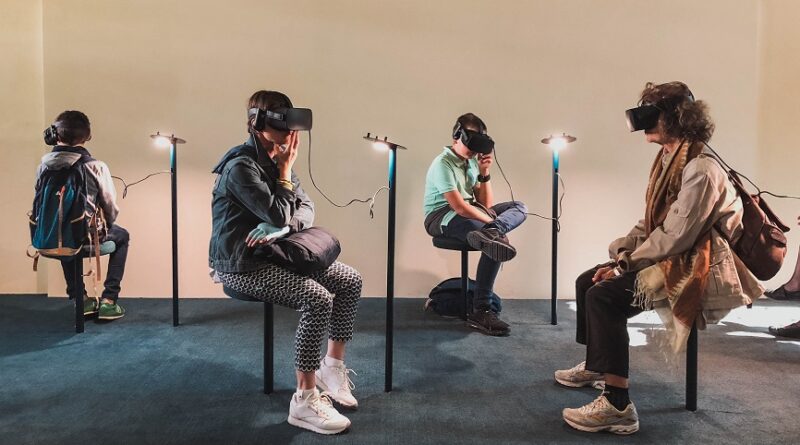How can AR-based mobile benefit the education sector?
Since the Covid-19 pandemic swept the world with panic, death, and complete turnover of regular life, the home stuck people worldwide started to align themselves more with hi-tech means to carry on with life’s daily needs. We have several overwhelming changes in a quick time, from online apps for delivery of essentials to the embracing of work from the home protocol for employees to online classes for students by using apps like Google Meet or Zoom.
In this respect, the most critical transformation came in the education sector, starting from primary and intermediate education to the higher education classes. Most classrooms around the world embraced online apps to carry on classes. Since schools are closed, students and teachers found these app-based solutions as the only means to continue classes.
Augmented Reality (AR) has long been a critical technology to transform online classes and remote education through the immersive learning experience they can deliver. AR-based mobile apps can ensure faster learning with more scopes of practical and hands-on training while getting access to education remotely. Combining the visible and touchable reality and the digital interface can deliver a fluid and transporting learning experience that students can find extremely engaging.
Here through the rest of this blog, we are going to explain the key ways. AR-based apps can benefit education in a never-before manner.
Immersive Learning Experience
The use of three-dimensional objects used in online educational programs can transform the traditional method of education. While regular images of objects in their curriculum offer students a general understanding of the subject with just a 2D image providing a single perspective, a 3D image of the same object shown on the screen can help see the thing from multiple perspectives.
This can be tremendously helpful in several educational niches and subjects. For example, in medical education and anthropological studies seeing the objects from all sides with a 3D view can replace seeing the same objects in real life for better learning and judgment. This AR Based learning can also be tremendously helpful for all the manufacturers of complex machines, mechanisms, and tools.
Visual Learning Gets Better
Augmented reality allows optimum visual perception of data and different perspectives of the learning objects. According to various studies and researches, human beings grab most of the learning through their visual perceptions. When the learning object is perceived visually from multiple perspectives, it helps in learning more details. This is exactly where AR-based learning apps can play a great role.
The 3D visuals on your mobile screen can help you get a better view of the objects you study. The same phenomenons studied in a classroom setting can be desecrated and analyzed deeper when they appear on your mobile device screen.
However with a similar principle, we built an AR-integrated app for an Ireland-based museum while serving as an app development Belgium firm, and that mobile app was applauded by Ireland’s government & rural affairs, also AR technology can be leveraged to majorly every education industry, From anatomy classes to the laboratory practicals of chemistry, everywhere, the AR-based apps can offer more engaging visual learning.
 Boosting Student Engagement
Boosting Student Engagement
It has been a tried and tested fact that innovative learning methods and approaches help in capturing student attention better. Particularly the children who always tend to be restless and diverted into all sorts of things can easily be engaged through a digital model of education with immersive graphics and eye-catchy visuals. In many cases, the effect of immersive and visual learning goes the same way for adults as well.
By using the latest and advanced tools like AR glasses and AR applications that help combine real-world appearances with digital ones, can easily help engaging students with a unique learning experience. This also ultimately ends up boosting the productivity and overall learning efficiency and output of students.
Ensuring Physical Safety
As we all know, some practical learning fields involve real dangers and physical safety concerns for the learners, especially the newcomers in the field. For the physically challenging training, AR-based immersive training apps can help the learners better understand the tips and tricks before they even set foot in the field.
For specific professional training fields like mining, aviation training, rescue operation, firefighting, and navy operations, the immersive AR-based training apps can do wonders to give the learners a safe learning experience before they get into the practical training sessions. Thus can reduce learners’ physical safety concerns to a great extent while without leaving any scope for compromise with the quality of education.
Collaborative Learning
One of the biggest benefits of AR-based learning apps is a collaborative approach to learning. The learners don’t need to browse the same textbook images; they can now collaborate through AR apps and can learn many details of a phenomenon without putting much effort.
The mobile apps align with 3D visuals, and collaborative features can help students get into an online chat with fellow students and teachers, remain in touch through video discussion, or even allow another remote learner to access the screen to show some changes to a project.
Conclusion
The penetration of mobile apps in the education sector has already been phenomenal. Now the AR-based apps are further fueling the growth and popularity of educational apps. The trend will continue to grow in the years to come.



